Popular on Food52
47 Comments
hplcman
August 11, 2017
I love dashi and keep the various ingredients around all the time as staples. The bonito flakes last a long time tightly sealed in the fridge. You can also add dried shiitake or little dried anchovies to make different types of dashi. Stock up on kombu every time you go to the Asian store (the best is from Japan, but there are some good Korean and Chinese brands as well). Wanna make it fast and easy? They sell dashi 'tea bags' that you can use. These are better than the granules or powders because they don't have any added MSG, if that's a concern of yours. Keep the extracted kombu and bonito and put them back into the pot with water and bring to a hard boil for a few minutes to make a 'second dashi'. This is great for cooking veggies in and gets the last bit of flavor from those things. Spent kombu is great in compost as it adds those trace minerals that plants love! You can buy bonito pre-shaved in big bags or in bags containing individual servings. The latter is more expensive and the shavings are smaller, so I think the quality is not as good. Nothing beats buying a block of the dried bonito and a shaver and preparing it yourself, but that's expensive and unnecessary unless you're making dashi every day.
Arron U.
August 14, 2015
I'm unfamiliar with dashi. Does it have a strong fish flavor? I'd love to try to make some miso soup because I've heard such great things about it, but I'm not a fan of fish. (I only like very, very mild fish like whitefish, cod, roughy; I don't like tuna, trout, salmon, catfish.) I'm afraid I would waste ingredients if it tastes too fishy.
Sam1148
August 30, 2015
If you've had miso soup before that's the 'fishyness' it has, as Dashi is the base soup for miso soup.
Hannah C.
January 20, 2018
i'd suggest trying a new thing like miso soup for the first time at an establishment that knows what they are doing, else you run the risk of making it wrong and thinking it's bad when really.. it was cooks error. At least then you'll know if you like it before wasting all your time making it, and you'll know what it should be like for when you do.
Betty J.
April 19, 2015
Food 52 has a recipe somewhere for Japanese Curry Meatloaf. It calls for Dashi. I made my own dashi because I have a Japanese section in my pantry. So that's one use for it other than Miso soup. My Japanese cookbooks have many recipes which call for it.
Jacob
May 22, 2014
So could I make ramen with this dashi?
JCCraves
May 22, 2014
Jacob, Dashi is very different from Ramen broths. And, there are many types of ramen broth. Most all have hearty stocks based on long simmered bones of one sort or another. Nothing prevents you from having ramen noodles in dashi broth but it's not the traditional pairing.
hplcman
August 11, 2017
That's not true. There are a ton of different ramen broths! From Japanese curry to bone broth to miso. Dashi can ABSOLUTELY be used for ramen if you are craving a curry or miso broth!
Kathleen
February 26, 2014
What do you do with the boiled bonito? Can you keep it in the broth?
Thank you
Thank you
Joy B.
February 26, 2014
I discard it after I've strained the broth! I've never heard of anyone keeping it in -- it might be too strong, and I imagine it would continue to flavor the broth, making it saltier and saltier the longer it sits.
JCCraves
February 27, 2014
Don't throw it away! You can make homemade furikake (the sprinkles for topping rice) You can stuff onigiri with it. You can, in fact, not strain it out at all as we sometimes do in home cooking.
Kathleen
February 27, 2014
Thank you all for educating me. I have some from my last Asian market trip yet had not gotten around to try it. All excellent suggestions. LDGourmet: Thank you!!
JCCraves
February 27, 2014
My pleasure! I love sharing good food, tips and recipes. You've given me a good idea for a quick instructographic to add to my site. Furikake!
Kathleen
February 27, 2014
LDG... where is your site? I used to live close to Uwajimaya market but not anymore. Love cooking anything Asian and healthy. I've been trying to locate lotus roots but it's unheard of in typical US markets.
Thanks again!
Thanks again!
JCCraves
February 27, 2014
http://food52.com/users/3359-ldgourmet You can find me everywhere Pinterest, FB, Twitter, Instagram...
Kathleen
February 27, 2014
I've just found you on Instagram and have been enjoying your lovely gallery! My pintetst is, Kat Haynes
Mims B.
February 25, 2014
With the spent kombu as well, slice very thinly, add a bit of dashi, a few splashes of soy sauce and a tablespoon of sugar. Simmer gently until syrup is formed and kombu slivers are candied. So yummy!
JCCraves
February 24, 2014
Btw the used kombu is saved and chopped into pickles, salads. It can also be reused to make niban dashi with the addition of small dried fish or an additional bunch of katsuobushi - secondary dashi. Reusing both original katsuobushi and original kombu, adds flavor, esp umami to many stewed or braised dishes.
benj
February 23, 2014
thanks ed. i am here in the philippines, so i dont know if that brand is available here. thanks again
benj
February 22, 2014
thanks. it is easy to make dashi. i will just have to find me a japanese store to buy bonito flakes.
Ed
February 22, 2014
I get mine from a local food coop. Not inexpensive but the quality is high, I use the Eden brand which I believe is organic. I think you can get it through Vitacost but I;m not sure.
maggie
February 21, 2014
How much kombu and bonita to one cup of water? I have used the instant but can't find any in my area that isn't loaded with MSG. Thanks.
MRubenzahl
February 21, 2014
Make it a quart or two at a time -- keeps well in the refrigerator. The amounts are not very critical.
One 4x4-inch piece of kombu and one cup of bonito flakes per quart of water.
I use this recipe:
http://www.foodnetwork.com/recipes/alton-brown/dashi-recipe.html
One 4x4-inch piece of kombu and one cup of bonito flakes per quart of water.
I use this recipe:
http://www.foodnetwork.com/recipes/alton-brown/dashi-recipe.html
MRubenzahl
February 21, 2014
Oh -- I see food52 has a recipe.
http://food52.com/blog/6161-japanese-basics-kelp-stock-and-dashi-stock
http://food52.com/blog/6161-japanese-basics-kelp-stock-and-dashi-stock
maggie
February 21, 2014
Thanks to all of you for your help and kind words. I lived in Okinawa, Japan for three years and feel in love with the food. I make my own sauces and dips for gyoza and other dumplings. I love to cook and since I could not find the instant product in my current area, I turned to Food 52. Knew that it would pay off. m
MsMora
February 19, 2014
Frequently I will make soups with half dashi and half chicken stock. The bonito flakes add a wonderful background flavor that few can figure out. I'll also melt sake lees (kazu) into my soups and stocks. That's another flavor component that has people guessing.
MRubenzahl
February 19, 2014
Once you have dashi, you just need miso (refrigerator section of any well-equipped Asian market) to make miso soup. Here is Alton Brown's:
http://www.foodnetwork.com/recipes/alton-brown/miso-soup-recipe/index.html
http://www.foodnetwork.com/recipes/alton-brown/miso-soup-recipe/index.html
savorthis
February 19, 2014
We use dashi not just in soups but as a flavor boost to sauces, braises, you name it. And while I much prefer to made my own, I always have the instant dashi on hand. Just a few grains of it adds a whole new layer of flavor.
thirschfeld
February 19, 2014
I like to take a fat finger of ginger, slice it length wise and add it with the kelp and let it steep all the way through with the bonito.
Jim
February 19, 2014
Ishikari Nabe! As "honored guest" once in a Hokkaido restaurant, I was served the specialty soup. My hosts were adamant that I "could never make this soup at home" and I couldn't stop laughing -- it was "My sister's potato/leek soup with dashi stock and big chunks of salmon."
Billy B.
February 19, 2014
Would this be the soup that Japanese restaurants give you with the sliced mushrooms and fried onions?
MRubenzahl
February 19, 2014
Billy -- probably. It usually has diced tofu and green onions but often has other little surprises. I've had it with a bit of fried onion.
Catherine L.
February 19, 2014
You have inspired me! I want to make ramen. Can I cheat and use not homemade noodles?
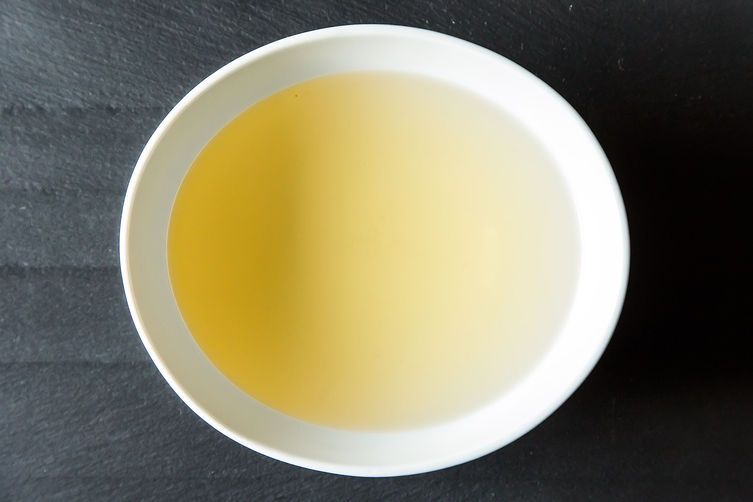
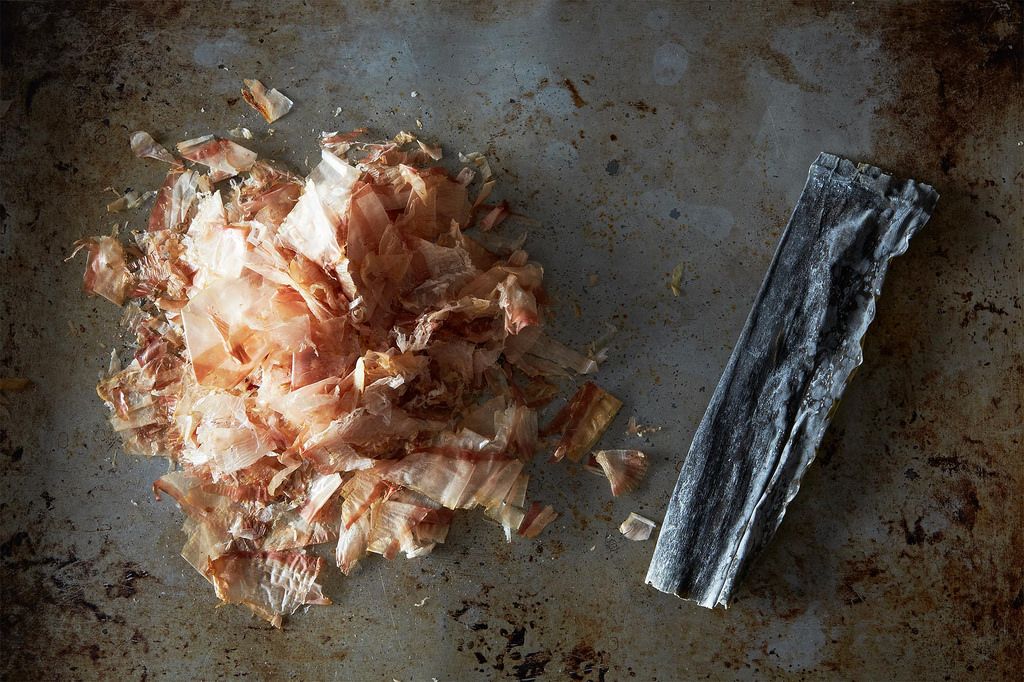
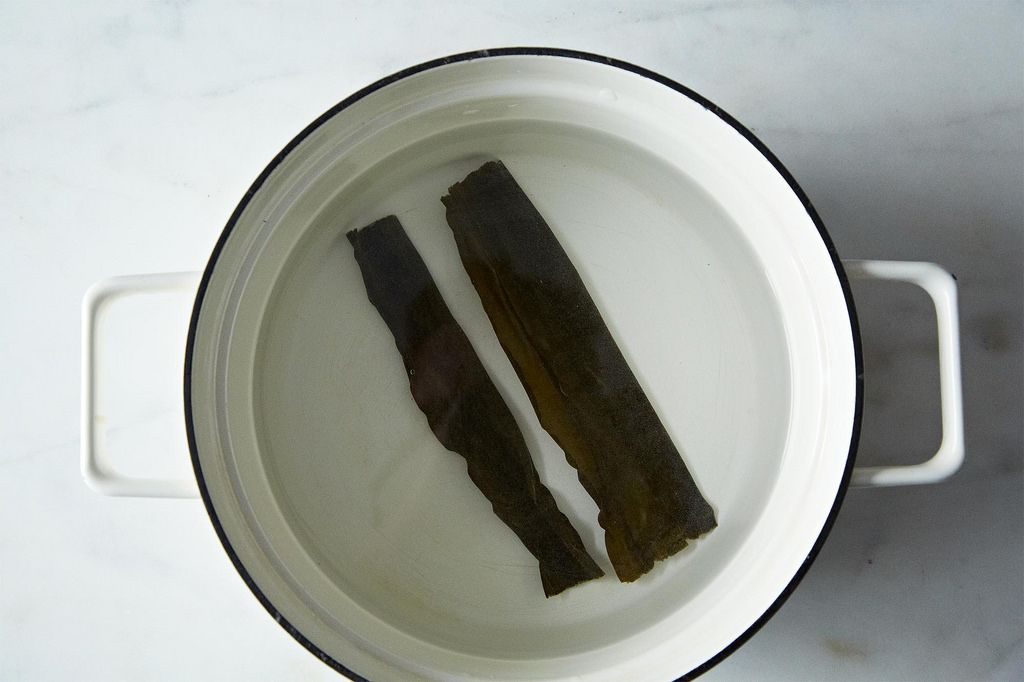

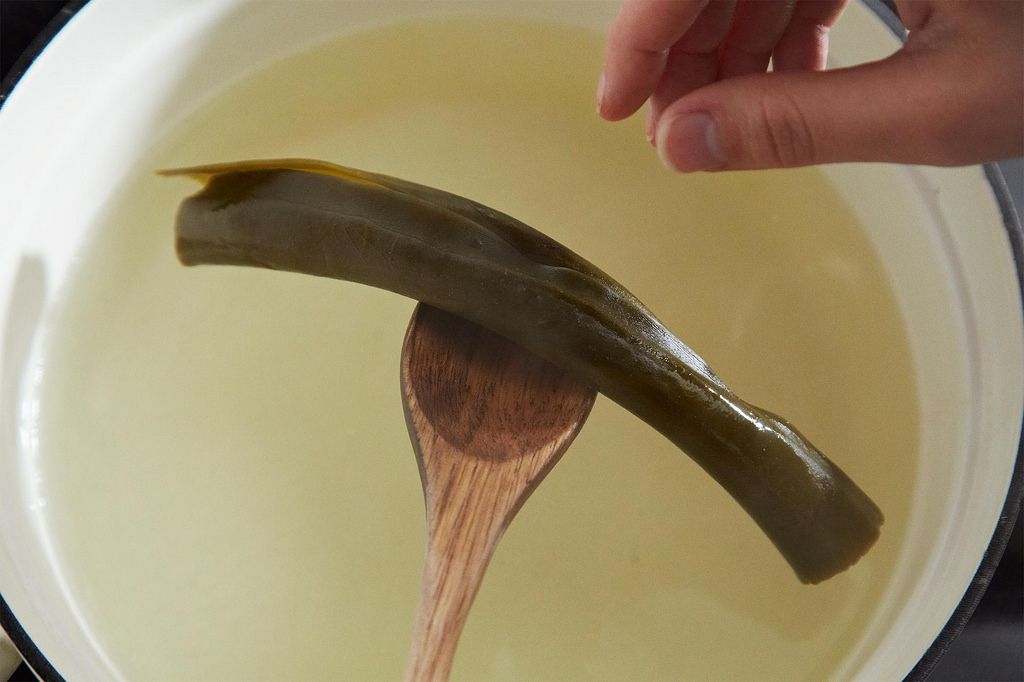
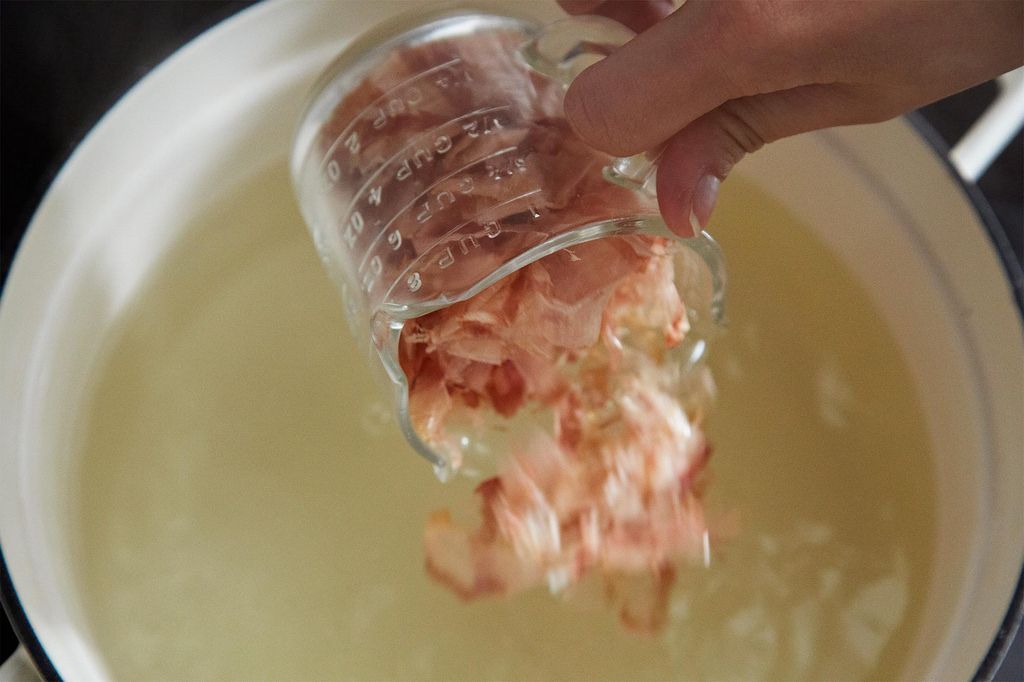
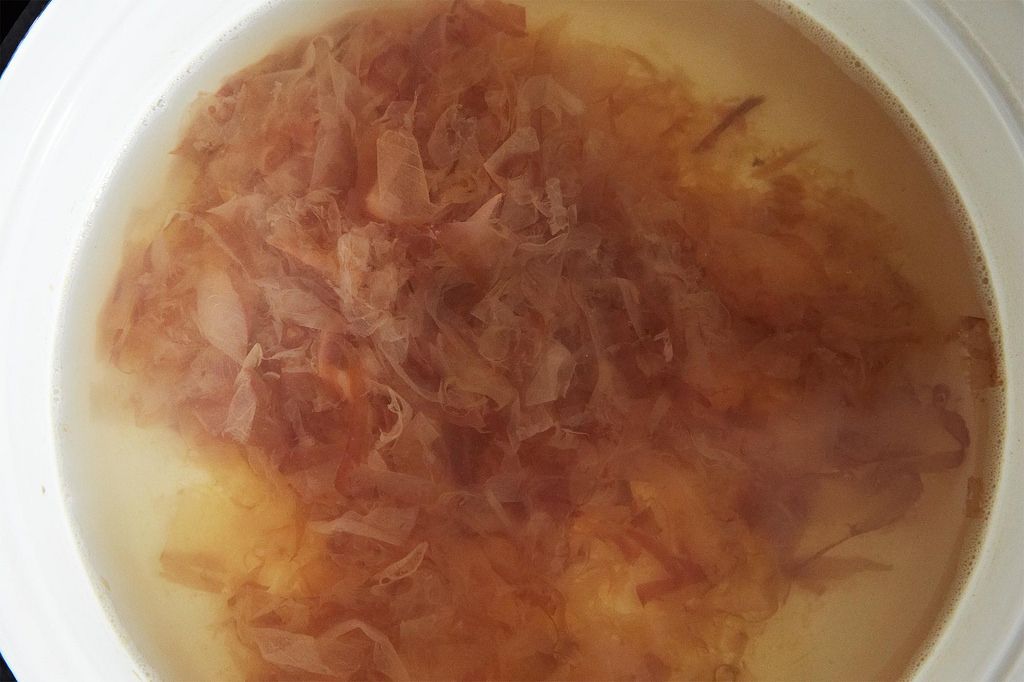
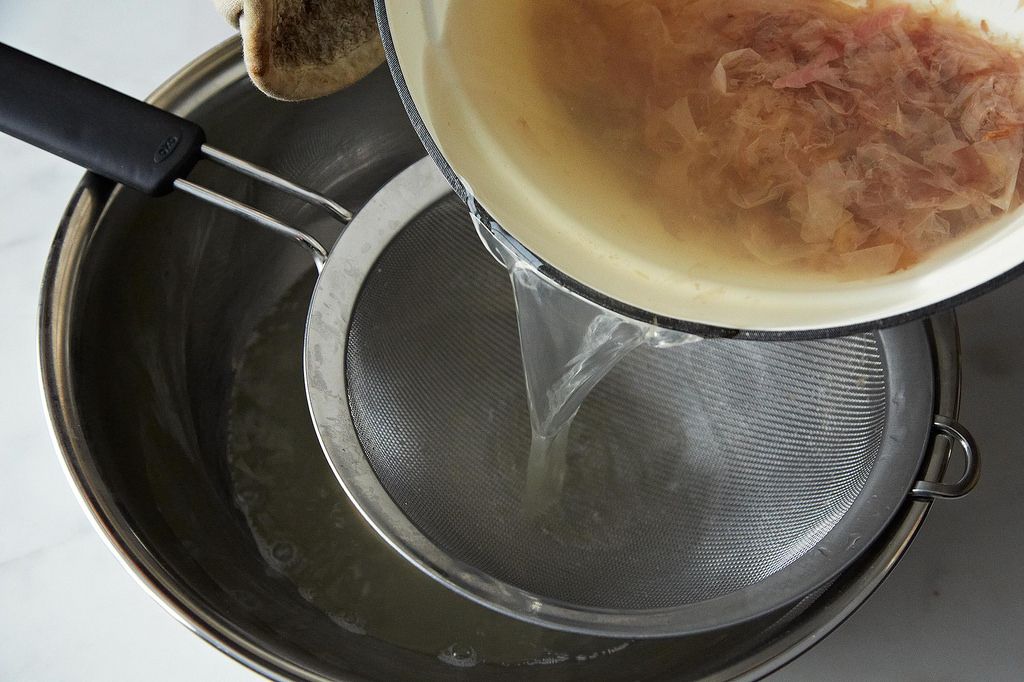

See what other Food52 readers are saying.